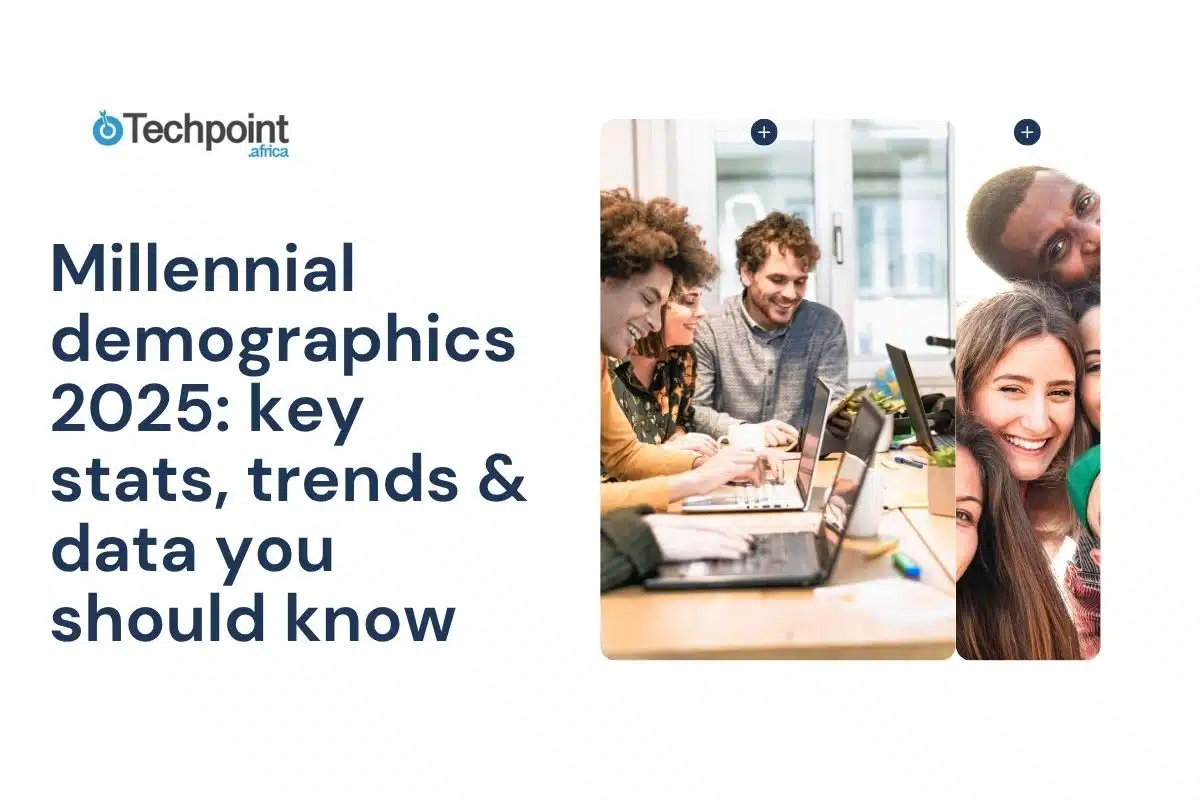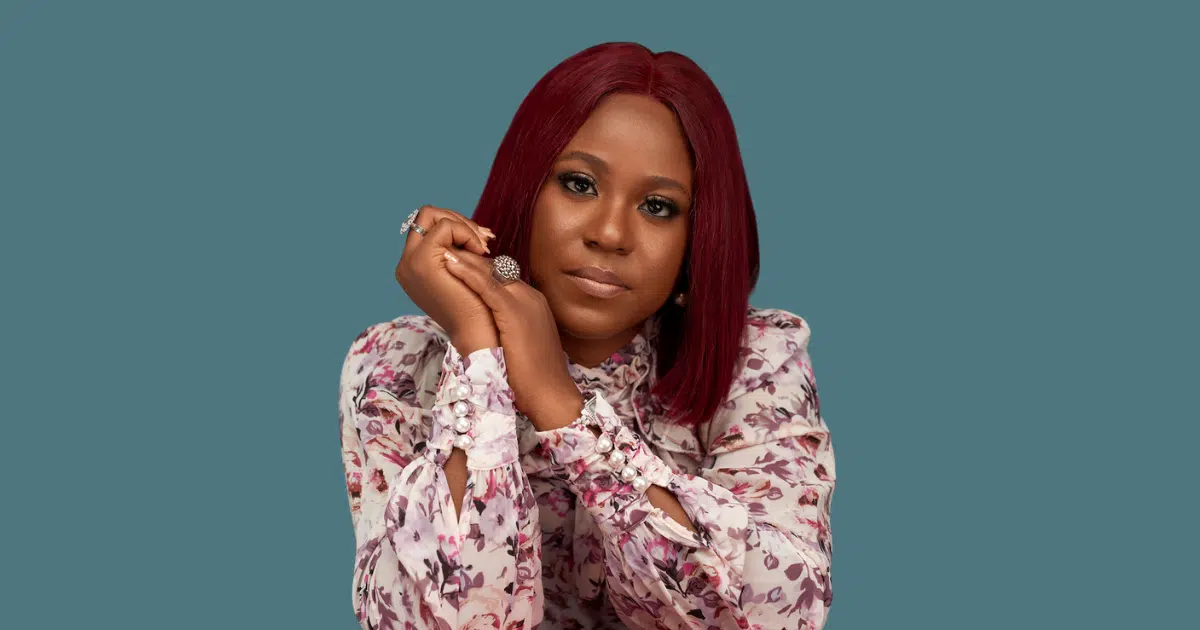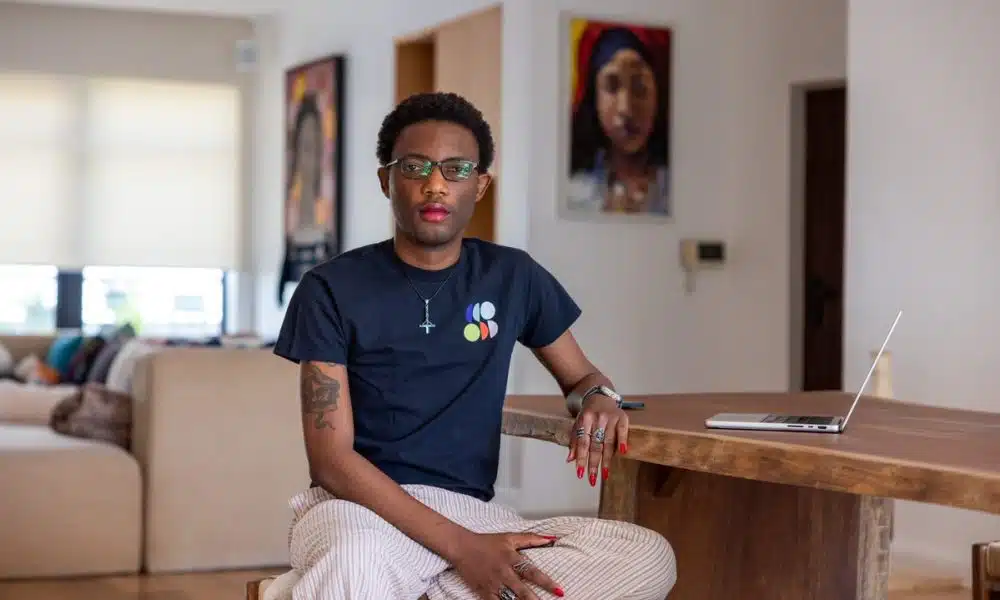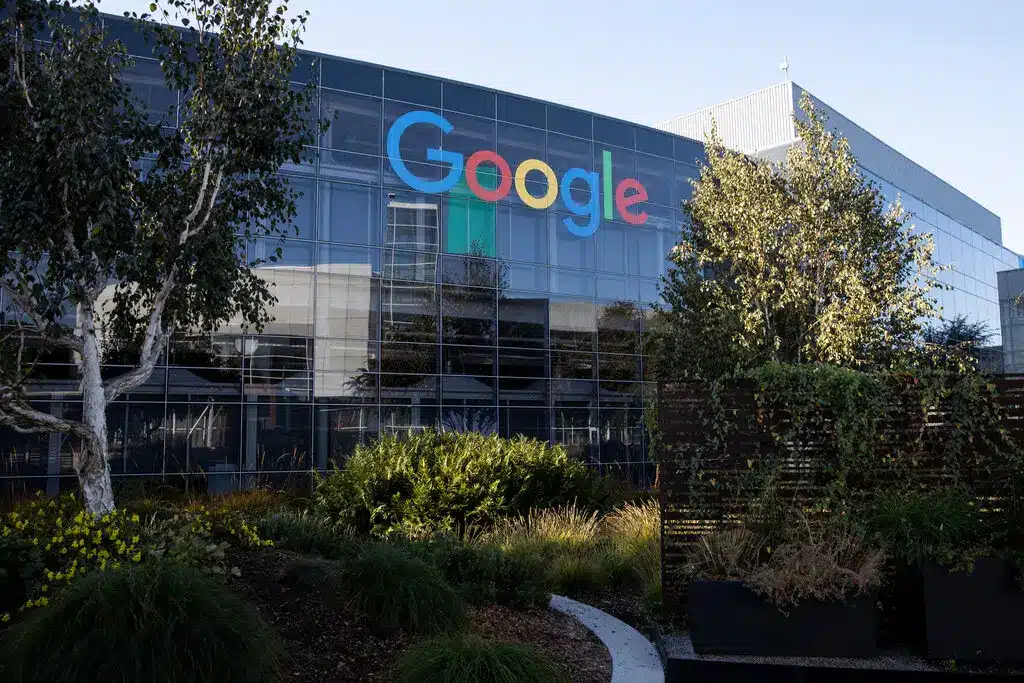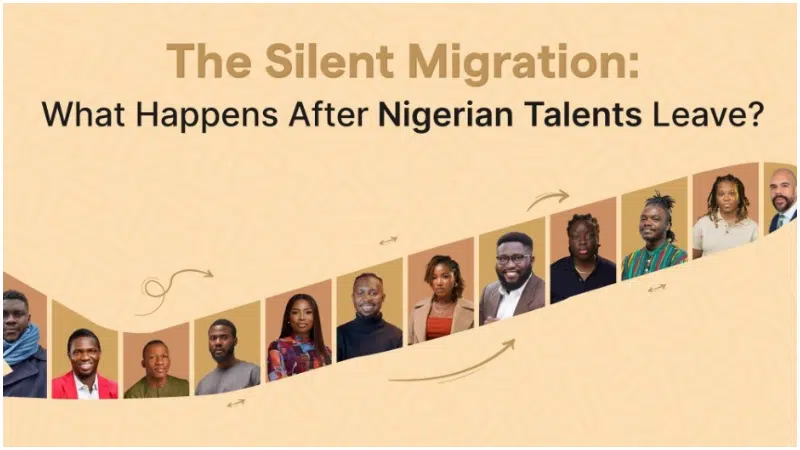Full disclosure: I’m a Millennial, so this hits close to home. I’m not just writing this for you—I’m writing it for all of us who grew up with dial-up internet and now pay for a family Spotify plan. We’re not the “young ones” anymore. Somehow, we became the grown-ups with responsibilities, routines, and recurring back pain.
It’s 2025, and a lot has changed. Gen Z is climbing the career ladder. Gen Alpha is busy in school. And Gen Beta is just being born. But Millennials? We’re still right here in the thick of it. We’re leading teams, making major purchases, raising kids, caring for parents, and shaping what culture and business look like.
This guide is all about where we stand now—our income, lifestyle, work habits, spending, values, and more. Whether you’re marketing to Millennials, hiring them, building for them, or just trying to understand them better, this is for you. Let’s dive into the numbers, the trends, and what they all mean in real life..
TLDR: Key takeaways from this article
- As of 2025, Millennials make up roughly 23% of the global population, with high concentrations in India, China, the U.S., Nigeria, and Brazil.
- They’re highly educated and digitally savvy, leading white-collar industries, freelancing, and remote work.
- Platform-wise, Millennials are multi-channel natives. YouTube, Facebook, Instagram, and TikTok are their top picks.
- Their median income is rising, but so is their debt, especially from student loans and credit-related expenses.
- Their values lean progressive. They care deeply about mental health, sustainability, work-life balance, and diversity. They are arguably the first generation to take these things seriously on a global scale.
- They buy based on purpose, convenience, and value, and they prefer brands that feel human, not hype-driven.
Defining Millennials: Who are we, really?
Let’s start from square one: who exactly are Millennials?
Millennials, also known as Generation Y, were born between 1981 and 1996, although no chronological endpoint has been officially set. That makes us anywhere from 29 to 44 years old in 2025. We were the first generation to come of age in the new millennium (hence, the name) and grow up with dial-up internet, the last to remember a world before smartphones, and the guinea pigs for every social platform rollout since MySpace.
We came of age in a world that shifted fast — from analog to digital, from brick-and-mortar to click-and-order. And that upbringing shaped everything: how we think, work, spend, scroll, and show up in the world.
Now in our prime working years, Millennials are raising families, leading teams, renting overpriced apartments (and occasionally still living with our parents), and carrying a solid chunk of the global economy on our backs, with caffeine, a sense of duty, and coping mechanisms to match.
A Millennial overview
Here’s a quick snapshot of Millennials in 2025:
| Birth year range | 1981–1996 |
| Global population | Approximately 1.8 billion (about 23% of the world population) |
| Average daily screen time | 6 hours and 42 minutes across devices |
| Life expectancy | 75–85 years, depending on region and lifestyle factors |
| Most-used devices | Smartphones, laptops, and smart TVs |
| Top platforms (global) | YouTube, Facebook, Instagram, TikTok, WhatsApp |
What makes Millennials different?
Millennials didn’t just witness major societal shifts; we grew up inside them. Compared to Boomers or Gen X, we’re more flexible, more tech-immersed, and more likely to question the “default” life path. Compared to Gen Z, we’re more nostalgic, more skeptical, and slightly more tired.
Here’s what sets us apart:
- Financially squeezed but educated: Despite being the most educated generation in history, many Millennials are poorer than their parents were at the same age. Rising living costs, student debt, and housing market chaos have delayed traditional milestones like homeownership and marriage for many of us.
- Digitally native, not addicted: We didn’t grow up with smartphones in our cribs, but we adapted early and fast. That means we use tech with purpose (and maybe a bit of burnout). Our behavior online drives everything from eCommerce to digital marketing, often more through intention than trend-chasing.
- Always online: We multitask across platforms and devices for work, play, and connection. We’re the remote workers, the freelancers, the digital nomads. And when we shop, it’s usually online, from skincare to side hustles.
- Delayed commitments: Many Millennials are delaying or redefining traditional life stages. We rent longer, marry later (if at all), and rethink what “settling down” looks like. In some countries, nearly 40% of us have lived with our parents well into adulthood, something rare for previous generations.
- Purpose over prestige: Our values lean progressive and personal. We care deeply about mental health, sustainability, inclusion, and work-life balance, and we expect the same from brands, employers, and institutions. We’re less interested in status, more interested in alignment.
In summary, Millennials are educated, adaptable, digitally fluent, and values-driven, but also financially stretched, over-scheduled, and navigating a world that doesn’t always make space for nuance. We’re the glue generation: holding down the workforce, raising the next gen, and still trying to figure out what “success” really means.
Millennial population size and growth
If you’ve ever felt like every product, ad, or public policy was somehow speaking directly to you, that’s probably not a coincidence. There are over 1.8 billion Millennials globally in 2025. That means Millennials make up around 23% of the world’s population, spanning every continent, industry, and social layer. We are projected to account for 21.6% of the population worldwide by 2030.
We’re not just one of the biggest generations alive; we’re one of the most globally distributed and digitally connected. In the United States, for instance, around 72 million Millennials, just behind Gen Z, but still outnumbering Gen X. We overtook the Boomers in 2019 to become the largest adult generation in the U.S.
With roughly 440 million Millennials, India holds one of the world’s largest Millennial populations. This group is powering India’s digital-first economy, from eCommerce to edtech to social media trends.
In Nigeria, a country where over 70% of the population is under 35, Millennials account for about 60 million people. We’re the heartbeat of Nigeria’s tech, entrepreneurship, and social change. There are around 14 million Millennials in the United Kingdom, mostly packed into urban centers like London, Manchester, and Birmingham, shaping everything from politics to pop culture.
Millennials vs. other generations
Globally, Gen Z (born 1997–2012) has started to edge past us in numbers, but not by much. And while Gen X (1965–1980) still holds many senior roles, they’re slowly beginning to phase out of frontline influence. Millennials sit in a sweet (and sometimes stressful) spot. Old enough to lead, mentor, and manage. Young enough to pivot, build, and stay curious.
Why this still matters
Marketers, policymakers, and product designers ignore Millennials at their own risk. We’re not a niche; we’re a global economic engine. And in regions like India, Nigeria, and much of Southeast Asia, our influence is still growing, especially as mobile infrastructure, digital finance, and creator economies expand.
We’re here, we’re scaling, and in many ways, we’re still setting the tone for what’s next.
Geographic distribution
When I started digging into where Millennials are living in 2025, I expected the usual suspects: big cities, tech hubs, and the occasional beach town with suspiciously strong Wi-Fi. But what I found was much more: a generation on the move, urbanizing fast, migrating smart, and increasingly going global.
Urban vs rural: Still a city-first generation
Millennials are still overwhelmingly city dwellers. Globally, the majority of Millennials live in urban areas. In places like the U.S., U.K., and Canada, nearly 90% of Millennials live in urban areas. The story is similar in Latin America and Southeast Asia, where cities offer better jobs, faster internet, and more social freedom.
But rural isn’t dead. Not even close. In countries like Nigeria and India, millions of Millennials still live in rural communities, but they’re digitally connected, mobile-first, and often bilingual. Thanks to more affordable data and rising smartphone penetration, brands and policymakers can now reach rural Millennials more effectively if they speak the right language, literally and culturally.
Top countries by Millennial population
In 2025, Millennials make up a significant chunk of the working-age population across these countries. Here’s a quick look at how they are distributed:
| Country | Approximate Millennials population | Approximate % of total population |
| 🇮🇳 India | 440 million | 31% |
| 🇨🇳 China | 400 million | 28.5% |
| 🇺🇸 United States | 72 million+ | 21% |
| 🇳🇬 Nigeria | 61 million+ | 26% |
| 🇮🇩 Indonesia | 69.4 million | 25.87% |
| 🇧🇷 Brazil | 50.8 million | 25.33% |
Sources: Digital Crew, Vinicious Oike, Indonesia Millennial Report 2024.
These six countries alone represent well over half a billion Millennials, and their economic, cultural, and digital trends are shaping how this generation lives and works.
Regional breakdown of Millennials
Millennials make up 1.8 billion people globally, or 23% of the world’s population in 2021. While the number has adjusted slightly for 2025, the regional dynamics remain just as compelling:
Here’s a snapshot of how millennials break down by region:
| Region | Millennials’ % of regional population | Total Millennials |
| Asia | 24% | 1.1 billion |
| Africa | 21% | 278 million |
| Latin America & the Caribbean | 23% | 155 million |
| Europe | 20% | 148 million |
| North America | 21% | 76 million |
| Oceania | 22% | 9 million |
Note: Totals may not add up due to rounding. Source: Visual Capitalist, based on UN World Population Prospects.
Sources: Visual Capitalist.
What the regional data tells us
- Asia is unmatched when it comes to Millennials. 1.1 billion Millennials call the region home. In China, under-40s own two-thirds of all passports. In the Association of Southeast Asian Nations (ASEAN) countries, Millennials and Gen Z are expected to make up 75% of all consumers by 2030.
- Africa has the second-largest Millennial cohort. Millennials account for 278 million people and control 65% of the continent’s purchasing power, spending over $845 billion annually on household needs.
- In North America, Millennial spending is projected to rise 10% by 2025. But while Boomers were buying homes and raising kids by this stage, Millennials are shifting the script: only 1 in 3 U.S. Millennials live with both a spouse and child today.
- Job security and education debt are key blockers. In a recent U.S. survey, over half of Millennials expressed anxiety about their long-term employment prospects.
The Millennial migration shift
The part that fascinated me the most is that Millennials are not just moving for jobs anymore. Thanks to remote work, better Wi-Fi, stronger passports, and friendlier visa policies, we’re experiencing a digital nomad renaissance.
Many of us are leaving expensive metros like New York, London, Lagos, and San Francisco for lifestyle-first, globally connected hubs such as Lisbon, Portugal; Bali, Indonesia; Lagos, Nigeria; and Chiang Mai, Thailand. More than just about cost, it’s about quality of life. Millennials are optimizing for flexibility, climate, community, and even time zones.
This migration is reshaping:
- Housing markets (think co-living and short-term rentals).
- Work cultures (remote-first companies and async workflows).
- Tourism economies (longer stays, coworking resorts).
- Policy (visa rules, tax reform, urban planning).
Millennials are still moving toward cities, but the idea of a “fixed address” feels increasingly outdated. Whether we’re building startups in Lagos or taking Zoom calls in Bali, we’re embracing mobility, with priorities that shift as quickly as our locations.
Age and gender breakdown
Millennials span nearly two decades. And trust me, there’s a huge difference between a 44-year-old Millennial raising two kids and a 29-year-old one figuring out rent, romance, and remote work.
Age segments
In 2025, Millennials fall between the ages of 29 and 44, which breaks neatly into two sub-groups:
- Older Millennials (born 1981–1988), now aged 37–44.
- Younger Millennials (born 1989–1996), now aged 29–36.
Both groups are navigating very different life stages. Older Millennials are more likely to own homes, hold senior leadership roles, or be deep in parenting mode. For younger Millennials, many are still exploring career shifts, city-hopping, or embracing minimalist, flexible lifestyles.
Millennial age and gender breakdown
On the gender front, the split is surprisingly balanced globally. A collation of different sources helped arrive at this result:
| Age range | % of Millennial cohort | Male | Female | Gender (Non-binary/Other) |
| 29–32 | 24% | 48% | 49% | 3% |
| 33–36 | 26% | 47% | 50% | 3% |
| 37–40 | 28% | 49% | 48% | 3% |
| 41–44 | 22% | 48% | 49% | 3% |
What’s evolving fast is gender identification. While the majority still identify as male or female, non-binary and gender-diverse Millennials are a growing and vocal subset, especially in North America, Western Europe, and parts of Asia. That shift is already influencing how brands design products, frame messages, and build communities.
If you’re building for Millennials in 2025, it’s no longer just about targeting a “30-something professional.” You’ve got to zoom in: age, gender identity, lifestyle stage, as they all matter. And a one-size-fits-all message just doesn’t land anymore.
Education and employment
If you asked me ten years ago, I would’ve told you Millennials were the “most educated generation in history.” And while that’s still technically true in 2025, the story is more complicated now because we’re also one of the most economically stretched generations ever.
Educational attainment
Globally, Millennials have outpaced previous generations in education. According to U.S. Census data, 40% of Millennials hold at least a bachelor’s degree, compared to just 29% of Gen X and 28% of Boomers at the same life stage. And the gender gap has flipped: Millennial women are now more likely than men to hold degrees, continuing a trend Gen X women kickstarted back in the early 2000s.
The numbers hold up across regions:
- US: Over 39% of Millennials hold a bachelor’s or higher.
- Europe: In the UK and Germany, tertiary education rates are above 45%.
- India and Nigeria: Urban Millennials are embracing hybrid and online education, driven by mobile accessibility and affordable data.
But the gag is that more degrees haven’t guaranteed better pay or job stability. In many countries, especially developing ones, we’re seeing a pattern of overeducation and underemployment. You can hold a master’s and still end up driving for Uber or launching your own thing.
Workforce participation:
We showed up, but the system didn’t always. Millennials now make up 75% of the global workforce, but the texture of that employment varies wildly.
We came of age during a series of economic curveballs — the 2008 financial crisis, the rise of precarious gig work, and most recently, the COVID-19 aftershock. Some of us stayed in school longer to ride out recessions. Others jumped into jobs that had nothing to do with our degrees, just to make ends meet.
Here’s how unemployment breaks down in key regions:
- In the US, Millennial unemployment tends to be higher than the national average of 4.25%, especially among younger Millennials still establishing careers.
- For Millennials in the UK, 2022 data showed that around 393,000 were unemployed, compared to 295,000 Gen Zers and 311,000 Gen Xers. This puts Millennial unemployment at roughly 5.1%, based on total Millennial working-age population estimates.
- Nigeria is no different. Unemployment among the younger Millennials remains stubbornly higher than the national average, signaling structural barriers for Millennials entering the workforce, especially outside major cities.
So yes, we’re working, but not always in roles we trained for, or under conditions that feel stable or fair.
Where we’re working
So what industries are hiring us, or, more accurately, where are we making our own luck?
- Tech and digital Services: Developers, product managers, UX designers, marketers. If it can be done on a laptop, we’ve probably tried it.
- Healthcare and wellness: From traditional roles like nurses and therapists to modern ones like wellness coaches and mental health advocates.
- Education: Especially in EdTech, online tutoring, and course platforms. Many of us are teaching what we had to teach ourselves.
- Gig and creator economy: YouTube, TikTok, Upwork, Fiverr, Substack, ride-hailing, food delivery…you name it. We’re building and have built brands and side hustles on top of 9–5 jobs.
- Sustainability and social impact: A growing number of us are working with green startups, ethical (direct-to-consumer) DTC brands, and impact-focused orgs.
Most Millennials aren’t working just one job. We’re stitching together careers from multiple income streams: salary, freelance gigs, digital products, crypto investments, and even passive income plays.
Income and spending power
I’ve come to think of Millennials as the generation that perfected budgeting apps, not because we’re obsessed with spreadsheets or particularly disciplined, but because we had no choice. In 2025, we’re earning more than ever on paper, but the space between income and affordability still feels razor-thin for many of us. More money, yes. But less breathing room? Also yes.
Earning more, feeling less secure
Higher education has shaped most of our life choices, including how we earn. For many of us, degrees put us on a better-paying trajectory as we’ve matured into our careers. But it’s a complicated picture.
Here are the numbers:
Median Millennial income of selected countries (2024–2025):
| Countries | Median individual income | Notes |
| US | $47,034 (individual); $69,000 (household) | Source: U.S. Census & Pew Research |
| UK | £37,480 (~$47,500) | Source: Office for National Statistics |
| India | ₹27,300/month (~$327); metro cities: ₹35,000+ | Source: DeskTrack. Income varies sharply by city and sector |
| Nigeria | ₦339,000/mo (~$220) | Source: Remote People. |
We’re earning more than Gen X or Boomers did at the same age, but when you adjust for inflation, cost of living, and debt, we’re often worse off.
Urban Millennials in fields like tech, health, and finance tend to outpace median earnings, but even those salaries are often devoured by rent, student debt, and rising costs. The paycheck is bigger, but the margins are slimmer.
Debt levels
Here’s the financial hangover most of us are still nursing:
- The average US Millennial carries $37,853 in student loans and over $6,000 in credit card debt. DTI (debt-to-income) ratios hover around 37.5 for younger Millennials, meaning nearly 40% of our income goes straight to debt servicing.
- In Nigeria & India, debt looks different. It’s often tied to business, migration, or housing loans instead of education. Still, repayment struggles are real.
- Across the board, rising Buy Now, Pay Later (BNPL) usage is blurring the lines between budgeting and borrowing.
Debt is a filter through which we view every decision, from taking vacations to having kids. It’s also reshaping how we value education. More and more Millennials are questioning whether a four-year degree is worth the cost, opting instead for certifications, bootcamps, and online learning paths.
Where do we spend the most?
Millennials are value-conscious but experience-driven. We may be broke-ish, but we’re still spending money.
Here’s a rough global breakdown of where our money goes:
| Category | % of spend (estimated average) |
| Housing & rent | 30–40% |
| Groceries & food | 15–20% |
| Travel & experiences | 10–15% |
| Tech & subscriptions | 8–12% |
| Fashion & beauty | 5–8% |
| Health & wellness | 5–10% |
| Financial tools & investing | 2–5% |
One stat that made me pause was that 63% of Millennials globally would rather spend on experiences than stuff. But we’re also the biggest subscribers to content, software, fitness, groceries, meditation apps…you name it. We’re minimalists with maxed-out auto-renewals.
We spend with our values in mind. We want flexibility, transparency, and tools that don’t just take our money but feel like they “get” us. If you’re trying to win the Millennial wallet in 2025, that’s your target: give us value with empathy, not just features with fees.
Technology use and digital habits
If Gen Z is fluent in TikTok, we Millennials are digital bilinguals. We remember the hum of dial-up, the drama of burning mixtapes onto CDs, and the first time someone “poked” us on Facebook. We grew up in the analog-to-digital shift: landlines to smartphones, floppy disks to cloud storage. So by 2025, our digital habits reflect both a flexible mindset and, let’s be honest, a bit of screen fatigue.
Platform priorities
Social media is still central to how we communicate, curate, and consume, but our preferences have matured somewhat. We’re less about posting every avocado toast moment and more about lurking, sharing useful hacks, or low-key flexing a career move. Millennials have a significant presence on social media, with most of them actively using it in 2024. In 2015, we’re more engaged than any other adult demographic.
Here’s how it looks right now:
| Platform | % of Millennial users (2025) | Primary use |
| YouTube | 94% | Learning, entertainment, parenting hacks |
| 66% | Lifestyle tracking, soft bragging, reels | |
| 78% | Family group chats, community groups | |
| 58% | Career flexing, quiet job hunting | |
| 54% | Chatting, community building, and participation | |
| TikTok | 51% | Scrolling, laughing, occasionally learning |
| 43% | Home inspo, DIY dreams, mood boards | |
| 42% | News, niche obsessions, career Q&A |
Source: Statista, Wiley Online Library, Backlinko
We may not post as much as we used to, but make no mistake, we’re still lurking. Still scrolling. Still comparing air fryer reviews at 2 am.
Are Millennials still the most active online?
Yes. In 2025, Millennials remain the most active adult demographic on social media, with 69.2% estimated to be regular users. And while Gen Z females (ages 16–24) currently log the most daily social time at 2 hours and 59 minutes, Millennial women (25–34) are right behind them, clocking in at 2 hours and 50 minutes.
So no, we haven’t “aged out” of the internet. We’ve just evolved our usage from clout-chasing to making more conscious engagement.
Device usage
Our phones are an extension of our brains at this point. Here’s how we show up across devices:
- Smartphones: Used by over 95% of Millennials daily. It’s our command center—calls, chats, work, memes.
- Laptops & desktops: Around seven in ten Millennials use them regularly, especially for remote work, side gigs, or résumé updates.
- Tablets: Many use them often for parenting (Peppa Pig) or streaming (crime documentary at midnight).
We switch between devices like it’s second nature, but the smartphone is still home-based. It’s always within reach and sometimes literally under the pillow.
Daily screen time
Millennials now average 6 hours and 42 minutes of screen time per day. That includes everything from doomscrolling and Slack messages to YouTube tutorials and online shopping detours.
Here’s the breakdown:
- Social media: 2.2 hours daily.
- Streaming content: 1.5 hours daily.
- Work or productivity tools: 2+ hours
- Online shopping and browsing: 0.6 hours.
And here’s how we compare across generations:
| Generation | Average daily screen time | Key considerations |
| Gen Z | 9 hours | Cognitive health risks, development overload |
| Millennials | 6 hours 42 minutes | High digital engagement, burnout rising |
| Gen X | 2 hours 49 minutes | Balanced usage, growing digital fluency |
| Boomers | 3 hours 31 minutes | Limited use, focused mostly on utility |
Sources: Magnet Aba Therapy.
We’re connected, more than that, we’re context switching constantly. One moment we’re in a Zoom meeting, the next we’re sending a meme in the group chat, then Googling if “mild burnout” is a diagnosable condition.
Social media engagement
Almost every Millennial is online now, nearly 100%, in fact. And about 1 in 5 of us rely entirely on our smartphones for internet access. So it makes sense that 86% of us are active on social media, juggling an average of 8.4 social media accounts each. Instagram, TikTok, Threads, Reddit, whatever your flavor, chances are we’ve logged in, lurked, and maybe even posted once this quarter.
But social media isn’t the only screen demanding our attention. Millennials are the largest smartphone-owning generation in the U.S., with 71.2 million users (that’s 96.3% of the Millennial population). Tablets also have their niche: as of 2024, 40.9 million Millennials used tablets, making up over half (54.4%) of our demographic.
We’re putting in serious screen time, especially on social. Millennials now average 2 hours and 25 minutes daily on social media, less than Gen Z (about 3 hours), but more than Boomers.
Do social Ads work on Millennials?
The short answer is yes. The long answer is that they work, but only if they’re good.
We’re picky about what grabs our attention. 75% of Millennials say ads are annoying, yet we still engage with the ones that feel like they get us, especially if they’re funny, smart, or hit a nerve in the right way.
Some real engagement stats to know:
- Millennials are 25% more likely than Gen X and Boomers to buy from social media ads.
- We’re drawn to content that’s fun (43%) and informative (29%).
- 56% of us have bought something after seeing it posted by someone we follow.
And while ad blockers are common, a well-crafted, authentic ad still cuts through the noise, especially if it doesn’t scream “this is an ad.” In other words, be as natural as possible.
If your brand doesn’t stand for something, we notice and move on. Millennials are increasingly driven by value alignment, not just value pricing. 74% prefer brands that support causes they believe in, and 48% actively seek out socially responsible companies.
How to reach Millennials in 2025
If you want to connect with Millennials today, here’s what works:
- Authentic storytelling: Tell us who you are, what you stand for, and why we should care. We need personality and purpose, not necessarily perfection.
- The right kind of influencer collaborations: We trust creators who feel real, not rehearsed. Work with people whose values align with your brand and ours.
- Platform-native engagement: Show up where we are (Instagram, TikTok, Twitter), and talk to us (please, don’t just broadcast). Ask questions, share behind-the-scenes, and spark conversations.
- User-generated content (UGC): Let us in. From unboxing videos to hilarious reviews, spotlighting real customer experiences makes your brand feel human, not corporate.
- Cause-driven campaigns: We want to know your brand is trying to do some good. Support social and environmental causes we care about, and show your receipts.
- Snackable video content: Share short videos that inform, entertain, or inspire. Make them scroll-stopping and share-worthy.
Lifestyle and values
If there’s one thing I’ve learned as a Millennial, it’s that the old life checklist: marry by 25, house by 30, kids before your student loans. We didn’t just toss the playbook. We’ve been writing our own script — sometimes out of choice, often out of circumstance.
Marriage, parenting, and homeownership
Let’s start with the big three adulting milestones:
- Marriage: Only about 44% of Millennials are married. For Gen X at our age, it was around 60%. It’s not that we’re anti-commitment. I think we’re just a little more intentional about it.
- Parenting: Roughly 55% of us have children. But we’re doing it later, usually in our mid-30s, with more planning and a lot more Googling.
- Homeownership: Globally, around 47% of Millennials own homes. In the U.S., it’s closer to 51%, but let’s not forget that many of us bought with family help, a side hustle, or the sheer force of Zillow obsession.
We’re not behind. We’re just trying to catch up with our realities. Two recessions, student debt, and a pandemic will do that to a generation.
Our core values: Climate, inclusion, and balance
Call us “the woke generation” if you want, but this isn’t a phase. These values run deep, and they shape how we live, shop, work, and engage.
- Climate consciousness: More than 80% of Millennials factor sustainability into what they buy. We’ll pay more for ethical brands, and we’ll call out greenwashing when we see it.
- Diversity and inclusion: We want to see the world reflected in our feeds, boardrooms, and brand campaigns. Inclusion is a baseline expectation.
- Work-life balance: We’re the ones who popularized “quiet quitting,” fought for mental health days, and made “work from anywhere” a permanent fixture. A flexible job beats a fancy title every time; that’s what we think.
Lifestyle trends: Wellness, minimalism, remote everything
- Wellness: Whether it’s therapy, fitness apps, or plant-based eating, we’re all in. The global wellness market, driven by Millennials, grew 10% YoY in 2025.
- Minimalism: Owning less and doing more is aspirational. More than aesthetics, it’s about avoiding clutter in every sense.
- Remote Life: With about 68% of Millennial professionals working remotely or in a hybrid environment, the laptop lifestyle is our reality. 72% of millennial workers believe that a flexible work arrangement, including remote work options, is essential for their ideal job.
This generation isn’t chasing status symbols. We’re chasing alignment. If your brand, product, or workplace speaks to values over vanity, you’ll earn long-term loyalty.
Health and wellbeing
Some of us discovered therapy through a meme. Others swear by oat milk and 10k daily steps. Either way, Millennials have made health personal — and not just in a #SelfCareSunday kind of way.
Mental health takes center stage
Millennials are the first generation to openly talk about anxiety, depression, and burnout, and we’ve turned that into action:
- In 2025, over 64% of Millennials have used therapy or mental health services.
- App-based platforms like Calm, BetterHelp, and Headspace are most popular with 30–39 year-olds.
- Employers are catching up. Mental health benefits are now a top retention tool for Millennial workers.
Physical wellness
Traditional gyms are still in vogue. But we’re also into wearables (e.g., Apple Watch rings), fitness apps like Strava and Peloton, and flexible movement routines, such as yoga, hiking, or just walking our pet.
And despite the “avocado toast” jokes, Millennials are behind the rise in plant-based eating, intermittent fasting, and gut health awareness.
Sleep, stress, and supplement
Many Millennials say they struggle with sleep due to screen time and stress. Adaptogens, magnesium gummies, and CBD-infused teas are flying off shelves, thanks to Millennials. For us, wellness is a survival mode with style, not a luxury.
Media and entertainment
We’re the VHS-to-YouTube generation. We’ve pirated music and paid for six streaming services. We invented binge-watching and made podcasts our background noise. Let’s just say we’ve seen it all.
Streaming still rules
Yes, Netflix, YouTube, and Disney+ still dominate our screens. But subscription fatigue has also become a thing. We want choice, not chaos, and not 17 logins and a monthly bill that rivals our rent.
Most Millennials still prefer on-demand content over live TV, but the format is shifting. Short-form video (yep, even TikTok) is now part of our lean-back entertainment routine. We’re watching 90-second clips the same way we used to devour full episodes — and sometimes with more satisfaction.
The hack is to give us great content without making us work for it.
Podcasts, audiobooks, and digital companions
In 2025, more Millennials listen to podcasts weekly than not. We’re talking finance deep dives, true crime sagas, wellness advice, and nostalgic rewatch shows that feel like catching up with old friends.
Audiobooks are rising too, especially during workouts, commutes, or those oddly meditative cleaning sprees. It’s less about entertainment, more about multitasking content that fits into our already packed lives. Sometimes we just want something to keep our brains busy while we fold laundry or pretend to be productive.
Gaming as mainstream culture
More than 6 in 10 Millennials game regularly in 2025, and no, it’s not all first-person shooter (FPS) chaos. Think cozy indie games, mobile puzzles, and co-op nights with friends.
Platforms like Twitch, Discord, and even Roblox are still active hubs for our digital hangouts. This is how we connect, unwind, and chase that sweet dopamine hit between Zoom calls.
Gaming has become part emotional regulation, part community building. And we’re not giving it up anytime soon.
Consumer behavior trends
If there’s one thing we’ve mastered, it’s intentional spending. We’re the generation that reads reviews, compares prices, and hunts for discount codes before clicking “Buy Now.” But it’s never just about saving money; it’s about feeling good about where our money goes.
Online shopping: The Millennial mall
eCommerce isn’t new for us. It’s our default setting. As of 2025:
- 81.3% of Millennials shop online at least once a month.
- 56% prefer shopping directly from their phones.
We love a good deal, but we also want speed and curation. We’re loyal to Amazon Prime’s efficiency, but we also make room for DTC brands that get us, the kind that feel niche, ethical, and made for our oddly specific interests. Cart reminder still works on Millennials. Personalized bundles are even better.
Where Millennial brand loyalty lies
Millennials will stick with brands, but only if they hold up their end of the deal. Sustainability and ethical practices are decision-makers, not nice-to-haves. 83% say they’re more likely to buy from brands that align with their values.
If a company aligns with our beliefs, we’ll buy again. But if it messes up (especially in public), we’ll screenshot it into a group chat before you can say “PR crisis.”
Show your work. Back up your claims. We’re paying attention.
Subscription services
Millennials helped normalize subscription culture, and now we’re the ones re-evaluating it.
The average Millennial has 6 subscriptions (from streaming to skincare). The winners are subscriptions that save time, reduce friction, or feel like a monthly gift to our future selves. Anything that starts feeling wasteful, hard to cancel, repetitive, or low on value will be done away with.
So, What Should Brands Know?
If you’re marketing to Millennials in 2025, here’s what I’ve learned firsthand:
- Transparency wins: Show us what’s in it, where it’s from, and what you stand for.
- Design for real life: We love modular pricing, personalized features, and brands that respect our intelligence.
- Talk like a human: Assume we’ve done our homework, because we have.
We’re not hard to win over. We just want our spending to mean something. Give us ease and ethics, and we’ll stick around.
What does this mean for everyone?
So, what do you do with all this Millennial data?
If you’re anything like me, the takeaway is pretty clear: you can’t afford to guess who Millennials are anymore. They’re not a monolith, and treating them like one is how brands get ignored.
For marketers and product teams
Millennials are entering peak earning years (some of them are already there), and they’re more brand-aware than ever. To resonate:
- Segment wisely. A 30-year-old tech consultant in Nairobi doesn’t want the same thing as a 43-year-old mom in Austin. Tailor for life stage, not just birth year.
- Build value around identity. Millennials love brands that feel like extensions of their values. Think eco, ethical, inclusive, or just cleverly convenient.
- Design for discovery. This generation finds new products via TikTok, YouTube, podcasts, and Reddit. Your SEO and social strategy should speak to that.
For researchers and trend analysts
Millennials are now the baseline, not the outlier. If you’re tracking what’s next, use them to:
- Benchmark how younger generations are diverging.
- Study digital adoption in transitional economies.
- Understand how values evolve post-Gen Z.
They’re like a living case study in digitally-accelerated adulthood.
For employers and HR leaders
If you’re still using “work hard, play hard” in your recruitment messaging, it’s time to evolve.
- Flexibility is a baseline. Think hybrid-first, async-friendly work environments. Do away with that strict, often unnecessary 9-5 structure.
- Mental health coverage, family leave, career coaching, these benefits actually move the needle.
- Build cultures around purpose, not politics.
If you want to retain Millennial talent, give them a reason to believe in what you’re building.
Conclusion
When I started digging into Millennial data for 2025, I expected a few predictable trends. But what I found was a generation still rewriting the rules in careers, consumption, and culture.
From their evolving family dynamics to their shifting tech habits, Millennials aren’t frozen in time. They’re maturing, diversifying, and in many ways, setting the tone for what modern adulthood looks like.
So if you’re marketing to Millennials, designing for them, hiring them, or even just trying to understand them, the insight is simple. Adapt your strategies. Speak to their stage of life. And above all, stop lumping them together.
FAQs about Millennial demographics in 2025
What is the Millennial age range in 2025?
Millennials were born between 1981 and 1996, which makes us 29 to 44 years old this year. They are raising kids, leading teams, and still refusing to let go of their 2010 playlists.
Are millennials getting off social media?
Not exactly. 86% of us are still active, but we’re switching things up. We’re more into short-form video, niche communities, and creator-led content than scrolling aimlessly on Facebook. Their feeds may be quieter, but they haven’t ghosted.
What do Millennials value most?
Things that matter and feel real, like flexibility, purpose-driven brands, mental health, inclusivity, and sustainability. In summary, they are chasing meaning (and maybe free shipping).
Where do most Millennials live?
Still mostly in urban areas, from New York to Lagos, Mumbai to London, Manila to São Paulo. Cities offer the work, the culture, the food, and unfortunately, overpriced rent.
Disclaimer!
This publication, review, or article (“Content”) is based on our independent evaluation and is subjective, reflecting our opinions, which may differ from others’ perspectives or experiences. We do not guarantee the accuracy or completeness of the Content and disclaim responsibility for any errors or omissions it may contain.
The information provided is not investment advice and should not be treated as such, as products or services may change after publication. By engaging with our Content, you acknowledge its subjective nature and agree not to hold us liable for any losses or damages arising from your reliance on the information provided.
Always conduct your research and consult professionals where necessary.

